In a previous blog, I discussed Pyramid’s unique forecasting capabilities, which give users the ability to choose from among eight algorithms to produce forecasts within existing reports and dashboards—even on large datasets. In this blog, I will discuss how users can take it up a notch, applying advanced forecasting adjustments to the pre-configured models to fine-tune the forecasts and increase their accuracy.
The problem
Third-party BI tool vendors offer a proprietary “black box” forecasting method where users have no understanding of the algorithm being used and no ability to further tweak the algorithm to better fit their specific analyses. They may also want to adapt existing algorithms by introducing additional inputs or logic.
Pyramid’s solution
Pyramid’s fully integrated forecasting solution uses simple point and click methodology to provide sophisticated forecasting algorithms within existing reports and dashboards. The advanced forecasting option allows users to tweak the pre-configured models with different choices based on each model selected. Users can also select a custom number of periods to forecast into the future using the forecast dialog.
Business case
Lauren is a BI Analyst for M&N Manufacturers. M&N uses SAP BW to analyze their SAP ERP and Pyramid for their BI development and analytics (see previous blog). Lauren wants to perform forecasting tasks on her sales dataset and would like to fine tune the forecast to generate as accurate a forecast as possible.
Sales forecast
First, Lauren selects the Holt Winters algorithm to predict future sales.
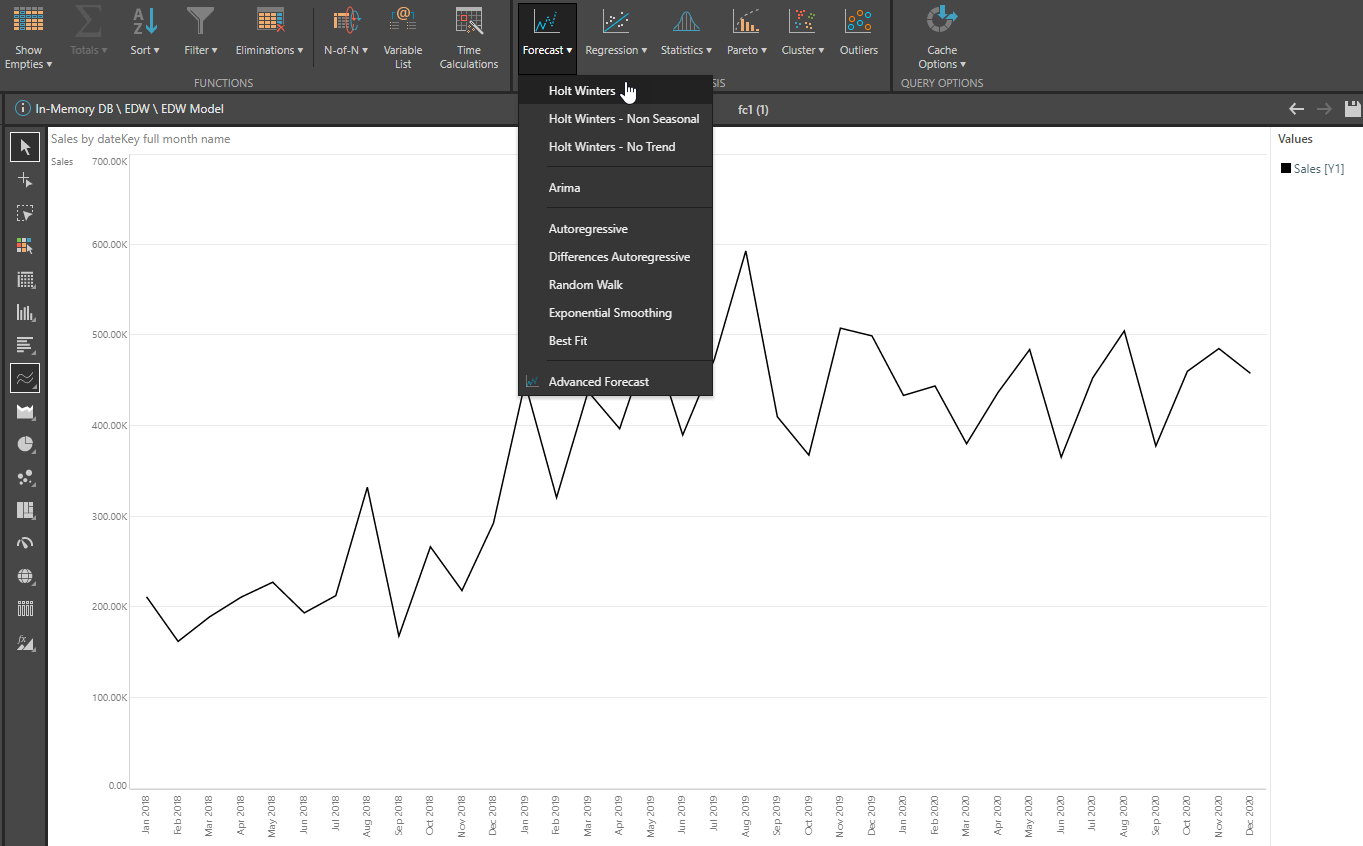
Since she has at least 12 months of sales data, Lauren can use the “Calculate History” option in the Advanced Forecast dialog box to see the forecasts that would have been made. She observes reasonable accuracy in the forecast.
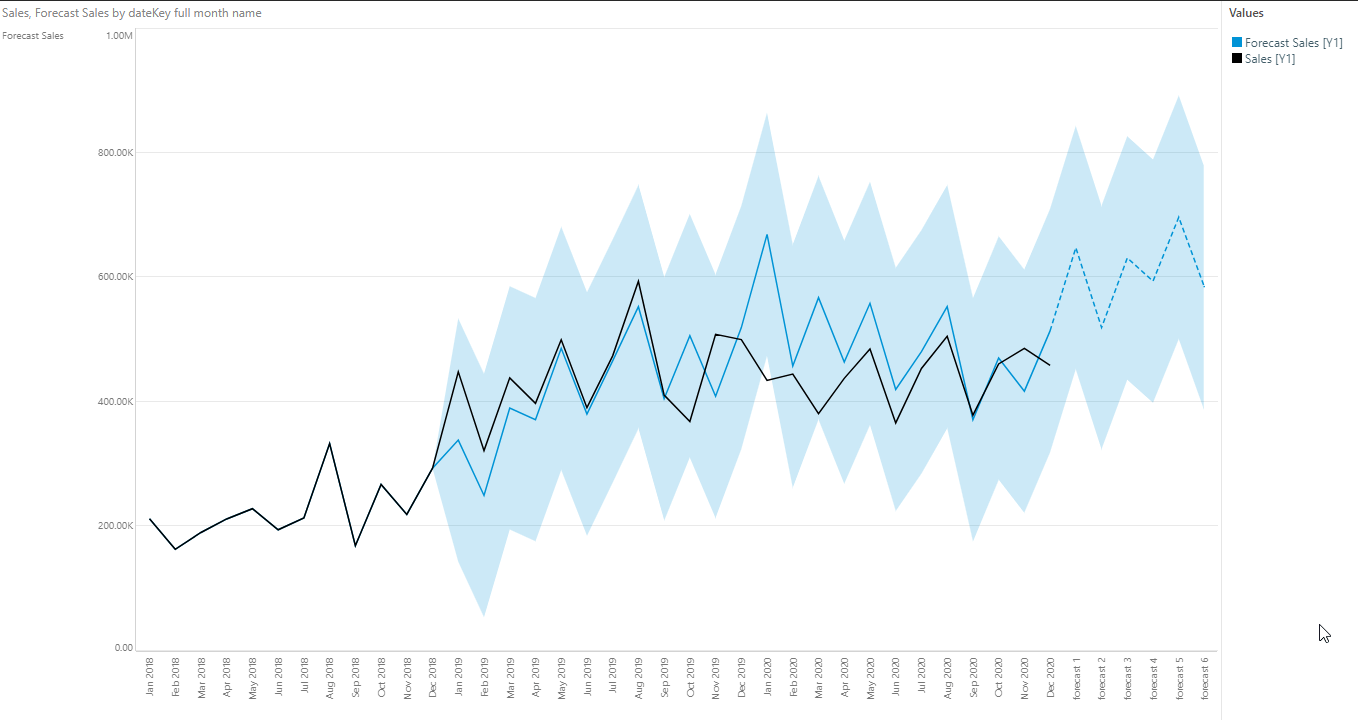
Again using the Advanced Forecast dialog, Lauren tweaks the outlier sensitivity and smoothing weight options further.
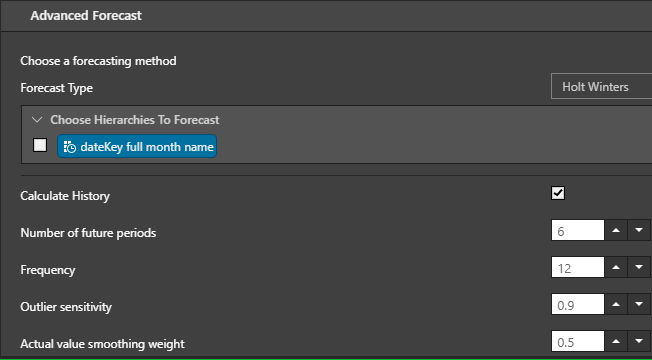
This results in a more accurate forecast that should provide a more realistic means of incentivizing the sales staff.
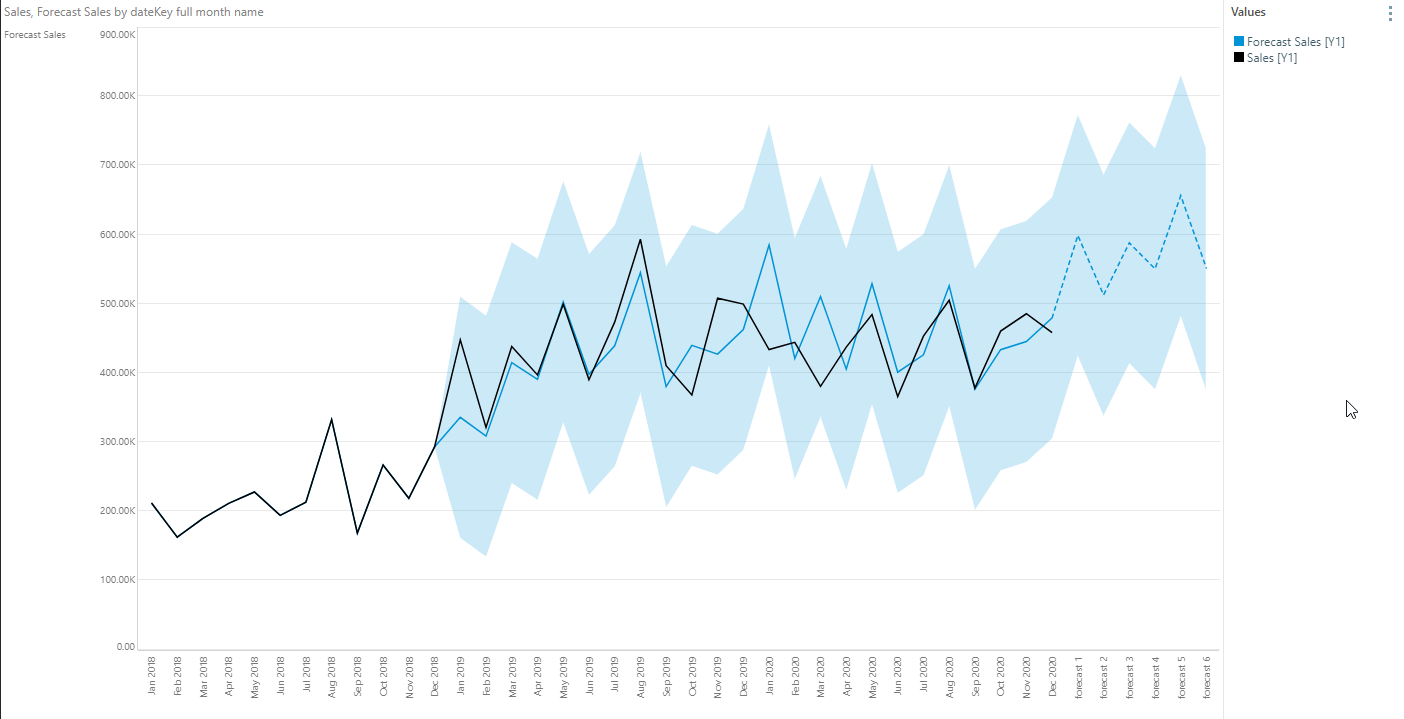
Sales by Manufacturer Forecast
In a second analysis, Lauren would now like to forecast sales per manufacturer to assist in preparing logistics around distribution. This time, she selects the Arima method to forecast sales for the Princess Manufacturer.
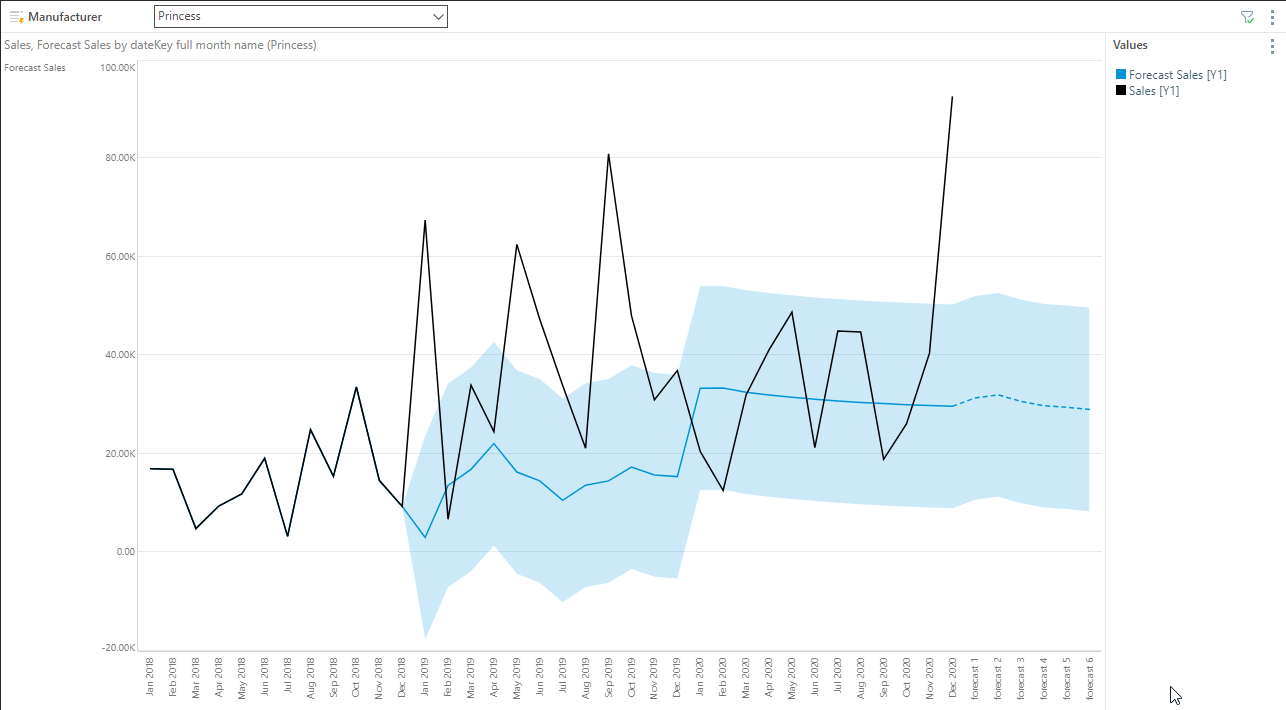
Lauren now fine tunes the Arima algorithm to improve her forecast.
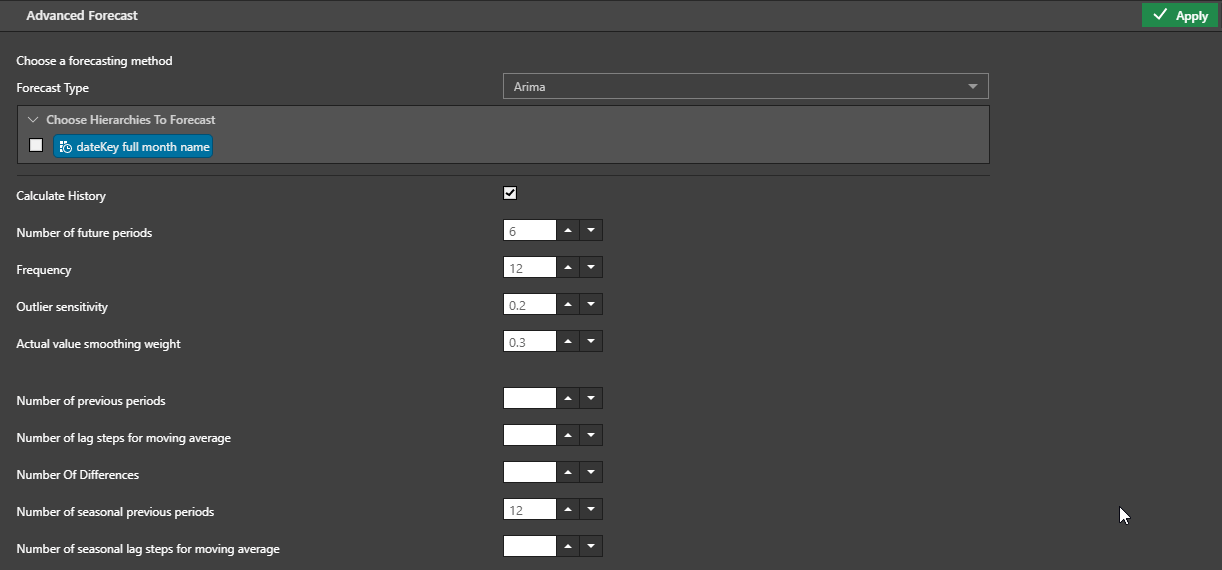
The resulting forecast has been further improved.
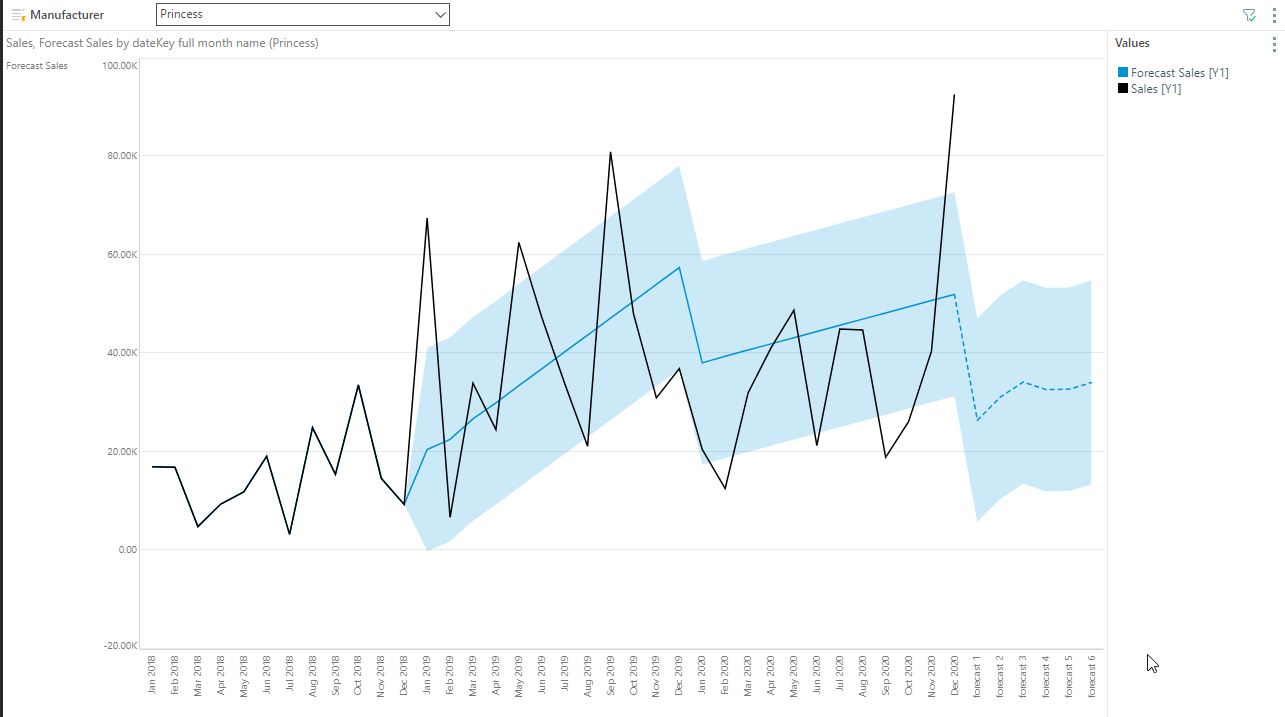
Summary
Third-party BI tool vendors provide no details about the forecasting method used and only offer a limited ability to further tweak the algorithm. Pyramid’s forecasting solution provides sophisticated forecasting algorithms within existing reports and dashboards with a single click. And recognizing that data analysts often need to be able to apply their own adjustments for a more accurate forecasting solution, Pyramid also gives users options for adjusting the algorithms without having to write them from scratch in Python or R. In a future blog, I will demonstrate how data scientists can develop their own Python or R forecast scripts to generate their own appropriate solution.



















